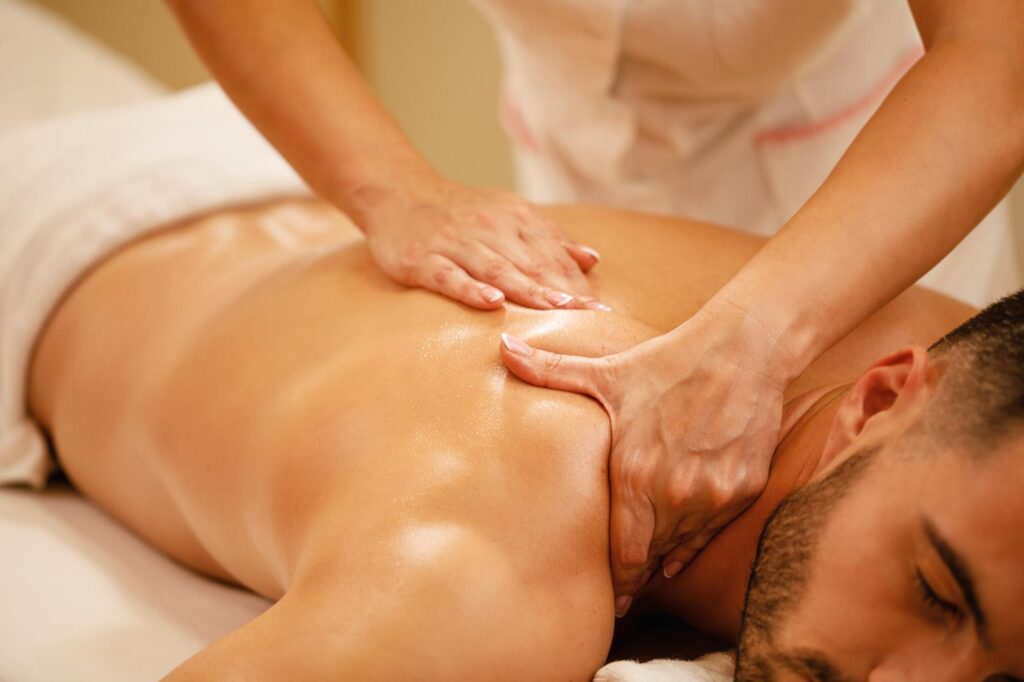About self-massage

Self-massage techniques
One of the most popular self-massage techniques involves using the fingers and hands to apply pressure to various parts of the body. For example, the neck and shoulder area often harbor significant tension due to stress and poor posture. To alleviate discomfort, gently knead the muscles at the base of the skull and along the shoulders using your fingertips. Applying circular motions can help release knots and tightness. Additionally, you can use your thumbs to press into the muscles along the spine, providing relief to the upper back. It is crucial to listen to your body and adjust the pressure according to your comfort level. This mindful approach not only prevents injury but also enhances the overall effectiveness of the massage.
Another effective technique is using a foam roller or massage ball to target larger muscle groups. Foam rolling, or self-myofascial release, is particularly beneficial for athletes or individuals who engage in regular physical activity. Begin by positioning the foam roller under the target area, such as the calves or thighs. Slowly roll back and forth, allowing your body weight to apply pressure to the muscles. This technique helps release tightness, improves flexibility, and promotes blood circulation. Similarly, massage balls can be used to target smaller areas, such as the feet or shoulders. The key to success with foam rolling is to move slowly and pause on any tender spots to allow the muscle fibers to relax.
Benefits of self-massage
Incorporating stretches into your self-massage routine can amplify the benefits. For instance, after massaging the neck and shoulders, gently stretch these areas to enhance flexibility. One effective stretch involves tilting the head to one side while using the opposite hand to apply gentle pressure to the opposite shoulder. This stretch not only relieves tension but also improves range of motion. Likewise, stretching the arms and back after a self-massage can help maintain a healthy posture and prevent discomfort. Combining stretching with massage creates a holistic approach to self-care, promoting both relaxation and mobility.
The benefits of self-therapeutic massage are vast and impactful. Regular practice can lead to reduced muscle tension, improved circulation, and enhanced flexibility. As individuals become more attuned to their bodies, they may also notice a decrease in stress levels and an overall sense of well-being. Self-massage encourages the release of endorphins, the body’s natural painkillers, which can further alleviate discomfort. Moreover, it provides a valuable opportunity for self-reflection and mindfulness. By dedicating time to oneself, individuals can cultivate a deeper connection to their bodies and promote mental clarity.
To maximize the benefits of self-massage, it is essential to establish a routine. Consistency is key in reaping the rewards of this practice. Consider setting aside a few minutes each day or week specifically for self-massage. Whether it’s a quick neck rub during a break or a longer session focusing on the entire body, regular practice fosters a sense of self-care and enhances the overall experience. Furthermore, integrating self-massage into daily activities can be advantageous. For example, performing hand massages during work breaks can alleviate tension caused by prolonged typing, while foot massages before bedtime can promote relaxation and improve sleep quality.

Another valuable tip for effective self-massage is to use massage oils or lotions. Not only do these products enhance the overall experience by providing a soothing glide, but they also offer additional benefits for the skin. Oils infused with essential oils, such as lavender or eucalyptus, can promote relaxation and enhance the therapeutic effects of the massage. Additionally, using a warm compress on areas of tension before massaging can help relax the muscles, making the process more effective. The combination of heat and massage creates a powerful synergy that promotes relaxation and alleviates discomfort.
As with any self-care practice, it is crucial to listen to your body and avoid pushing beyond your limits. If you encounter any sharp pain or discomfort during self-massage, it is essential to stop and reassess. Each individual’s body is unique, and what works for one person may not work for another. Experimenting with different techniques and finding what feels best for you is an integral part of the self-massage journey. Consulting a healthcare professional or a licensed massage therapist can also provide valuable insights and recommendations for specific techniques tailored to your needs.
Self-therapeutic massage is a powerful tool for enhancing physical and mental well-being. By learning and practicing various techniques, individuals can take control of their own health and cultivate a sense of relaxation and self-awareness. The benefits of self-massage extend beyond mere physical relief; they encompass a holistic approach to self-care that promotes mental clarity and emotional well-being. With dedication and consistency, self-massage can become an integral part of one’s routine, contributing to a healthier and more balanced life. So why not take a moment for yourself today and explore the transformative power of self-therapeutic massage? Your body and mind will thank you for it.

